May 24, 2025 | 16:23 GMT +7
May 24, 2025 | 16:23 GMT +7
Hotline: 0913.378.918
May 24, 2025 | 16:23 GMT +7
Hotline: 0913.378.918
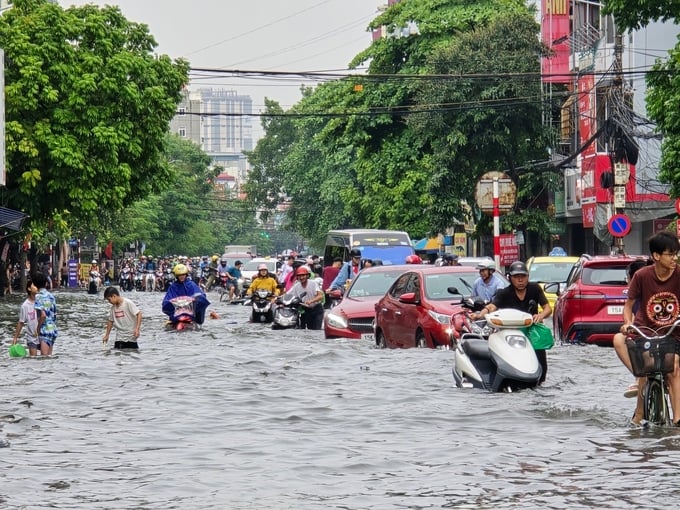
Tran Nguyen Hoan street was heavily flooded after a heavy rain. Photo: Dinh Muoi
Hai Phong city is located in a coastal area with quite flat terrain, the current foundation is relatively low and is surrounded by 6 large rivers including: Bach Dang River, Cam River, Lach Tray River, Van Uc River, Thai Binh River and Hoa River, so the drainage system is influenced by hydrological and oceanographic regimes.
With the current drainage system, the central urban area can only meet the rainwater drainage needs of about 50mm. Therefore, when it rains heavily or high tide, the whole city, especially urban areas near the sea will be flooded, and even places without rain will be flooded.
For example, in 2014, although it just began the rainy season, this city had 3 times flooding on some streets. The heaviest was in early June, when there was historic local flooding in many streets and residential areas in inner-city districts because of the prolonged heavy rain. This seriously affects people's activities and lives.
Areas that are often flooded locally when heavy rain occurs are located in most districts. Specifically, in Le Chan district, including To Hieu, Hang Kenh, Dinh Dong, Tran Nguyen Han, Nguyen Tat To, Dang Ma La, Chua Hang, Ton Duc Thang streets; in Hai An district includes Trung Hanh, Phu Xa, Ha Section 1, Provincial Road 356; Trung Luc, Lane 2 Bui Thi Tu Nhien, Cho Lung Street; The Kien An district area was flooded locally on all routes, mainly on Phan Dang Luu, Tran Nhan Tong, and Tran Thanh Ngo routes.
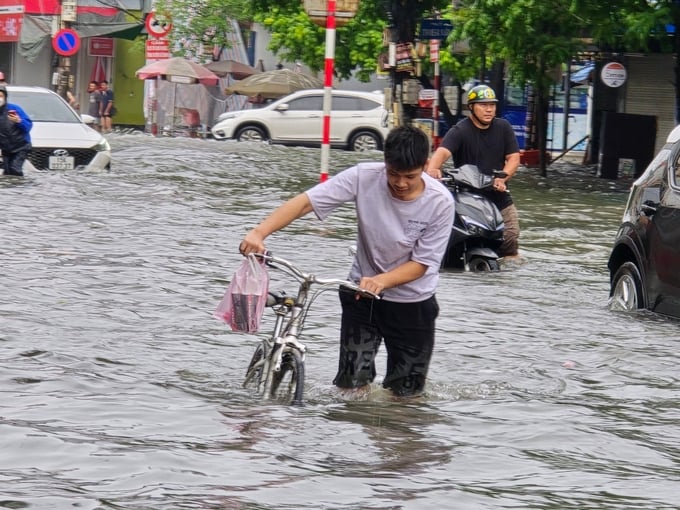
People miserable wading on the street after the rain. Photo: Hoang Muoi.
Notably, local flooding has occurred for many years and has gradually spread from urban areas to some districts such as Thuy Nguyen, An Duong,... There are many reasons but basically the drainage system in this area cannot meet drainage requirements for heavy rains. Therefore, Hai Phong needs more breakthrough solutions in planning and implementing the city's drainage system.
The urbanization process is taking place rapidly, the leveling of ponds, lakes and canals leads to increasingly concreted surface areas, reducing natural drainage capacity, while the current drainage system doesn’t meet the requirements. Activities of discharging waste, lime, mortar, broken bricks into canals, ditches, and drainage outlets cause drainage outlets to narrow, even become blocked, causing flow congestion, especially when heavy rain.
According to records from Hai Phong Drainage Company Limited, recently in Hai Phong, there have been frequent heavy rains with rainfall over 100mm, with special rains over 300mm. If heavy rain is combined with high tides, floods from upstream will cause widespread flooding.
Heavy rains in Hai Phong in recent years include: On August 26, 2021, the measured rainfall was over 250mm; on September 5, 2021, it was over 150mm; on August 1, 2022, the measured rainfall was 110mm; on August 26, 2022, the measured rainfall was 248mm; on June 18, 2022, the river tide rose above +4.5m; on June 9, the measured rainfall up to 1pm was 335mm.
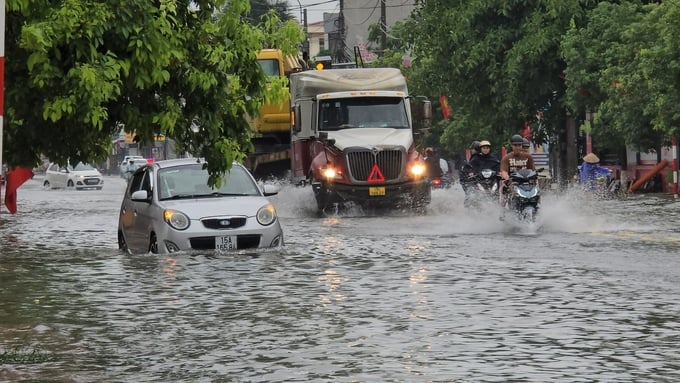
Flooding happened in An Duong district, something rarely seen before. Photo: Dinh Muoi.
To overcome flooding on streets, over the past years, Hai Phong city and directly Hai Phong Drainage Company Limited have developed and applied operating management procedures. In addition, maintaining the drainage system, pumping stations, and tide gates increases the operational efficiency of drainage works. Hai Phong has cooperated with Japan's Kytakyushu City Water Supply and Sewerage Department to develop sets of operating procedures that have been applied quite effectively.
On the other hand, Hai Phong has applied advanced and modern machinery and equipment such as: using sewer cameras to detect incidents; using high-pressure washers, mud dredgers to dredge sludge from manholes and alley sewers; high-capacity mobile pumps to increase drainage capacity for low-lying areas or affected by unfinished projects. At the same time, this city deployed the Flood Information Management Center to control flooding, improve efficiency in managing and operating the drainage system, and provide early warnings to people to minimize possible damage.
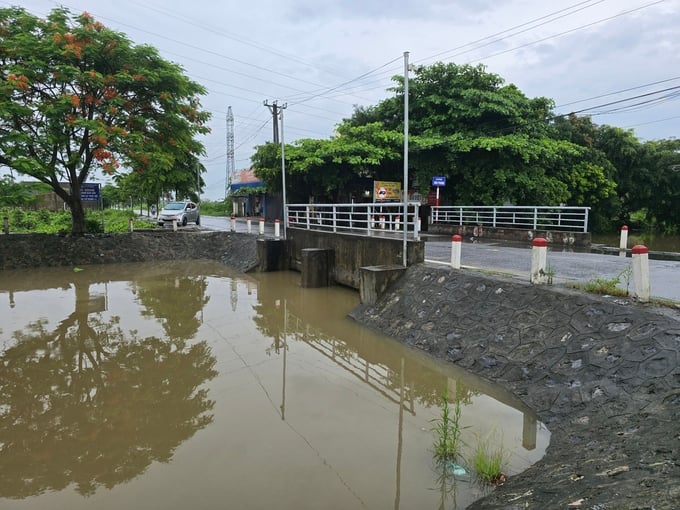
The canal system is full of water after every heavy rain. Photo: Dinh Muoi.
The city's sewer lines are mainly built to solve the immediate local flooding problem and are not synchronous according to the approved planning. Besides, except for some newly built urban areas with separate rainwater and wastewater drainage systems, the city's sewer system is mostly a common drainage system. Along with that, the sewer system has been installed over many periods of time, the quality of the sewers is uneven. Currently, some sewer lines have degraded due to being built a long time ago.
Therefore, to completely overcome the local flooding situation, it is necessary to implement synchronous solutions and devote large resources to investment. According to Mr. Pham Quang Quynh - Chairman of Hai Phong Drainage Company Limited, based on the general planning approved by the Prime Minister on adjusting the general planning of Hai Phong city to 2040, with a vision to 2050, it is necessary to soon approve separate specialized plans for drainage and wastewater treatment, adjust stormwater and wastewater drainage plans to be consistent with the general planning. In particular, it is necessary to give priority projects that need to be renovated and promulgate general regulations on foundation leveling, regulations on building separate drainage systems for rainwater and wastewater in newly built urban areas.
Along with that, Hai Phong needs to set up an investment project to renovate and build a new drainage system from ODA capital, in which immediate priority is given to implementing a number of items such as: Renovating the drainage system of Hai An district, Thuy Nguyen district; dredging lake ditches in the city; building a forced pumping station in the old city drainage area in Hong Bang district. At the same time, this city continues to implement phase 2 of the Vinh Niem wastewater treatment plant construction project, increasing the plant's capacity to 72,000m3/day-night.
In 2024, to ensure drainage and limit flooding, Hai Phong Drainage Company Limited organized maintenance and repair of all pumping stations, tide gates, and flood valves to ensure regular operation, especially during the rainy season. In addition, organize and supervise the operation system of large rainwater pumping stations in May Den, Vinh Niem, Ba Tong, So Dau, Thuong Ly, Cau Rao underground tunnel, Nam Cau Binh underground tunnel.
Translated by Phuong Linh
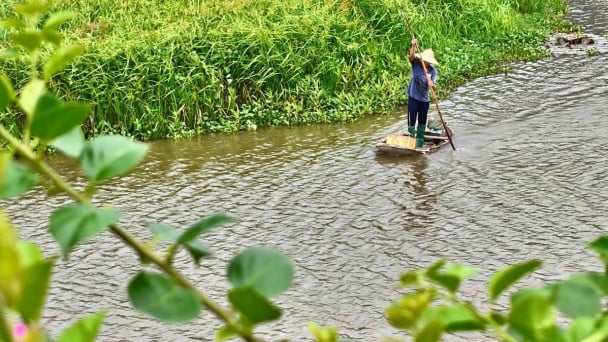
(VAN) In the tranquil wetlands of Van Long, there are quiet souls who guard the forests, nurture the waters, and oversee every bird and troop of langurs as protecting the essence of a living heritage.

(VAN) WWF, GIZ, IUCN, UNDP call for biodiversity conservation and sustainable development must be regarded as a unity in strategies for a green future.
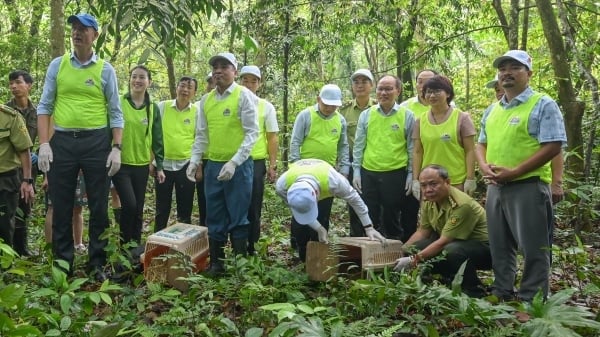
(VAN) On celebration of International Day for Biological Diversity, Deputy Minister Nguyen Quoc Tri called for practical actions to address nature and biodiversity conservation.
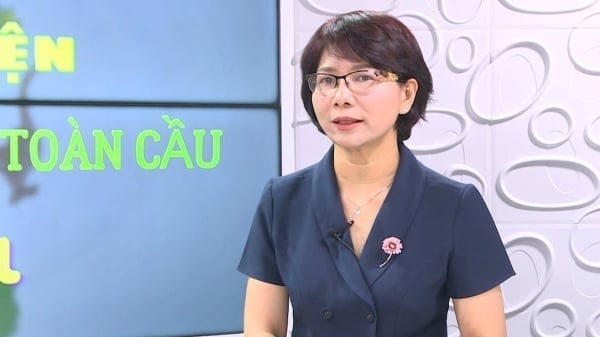
(VAN) Dr. Hoang Thi Thanh Nhan – Deputy Director of the Nature and Biodiversity Conservation Agency – highlighted this on the International Day for Biological Diversity, May 22, 2025.
![Ho Chi Minh city adapts to climate change: [2] Accelerating action](https://t.ex-cdn.com/nongnghiepmoitruong.vn/608w/files/chiqk/2025/05/22/4024-4220-bien-doi-khi-hau-1-100626_766.jpg)
(VAN) Clearly recognizing the challenges posed by climate change, Ho Chi Minh city has swiftly shaped its policies and implemented practical solutions to adapt.
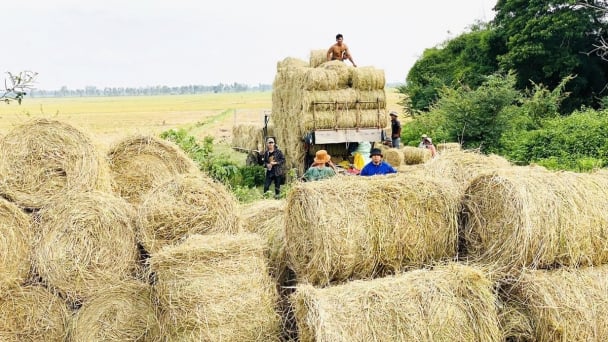
(VAN) Rice straw is no longer just a discarded byproduct, but it is becoming a green resource that helps farmers in the Mekong Delta reduce emissions and promote circular, sustainable agriculture.
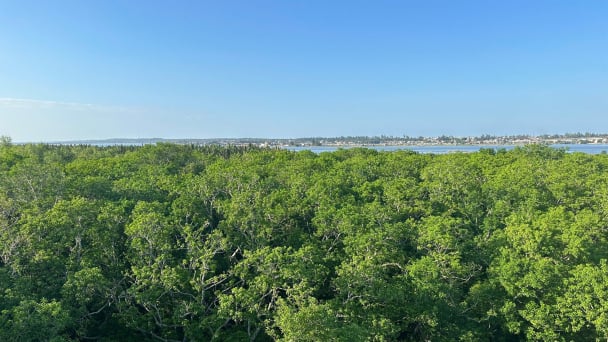
(VAN) Other Effective Area-based Conservation Measures (OECMs) are solutions that contribute effectively to achieving the goals of the Kunming–Montreal Global Biodiversity Framework.